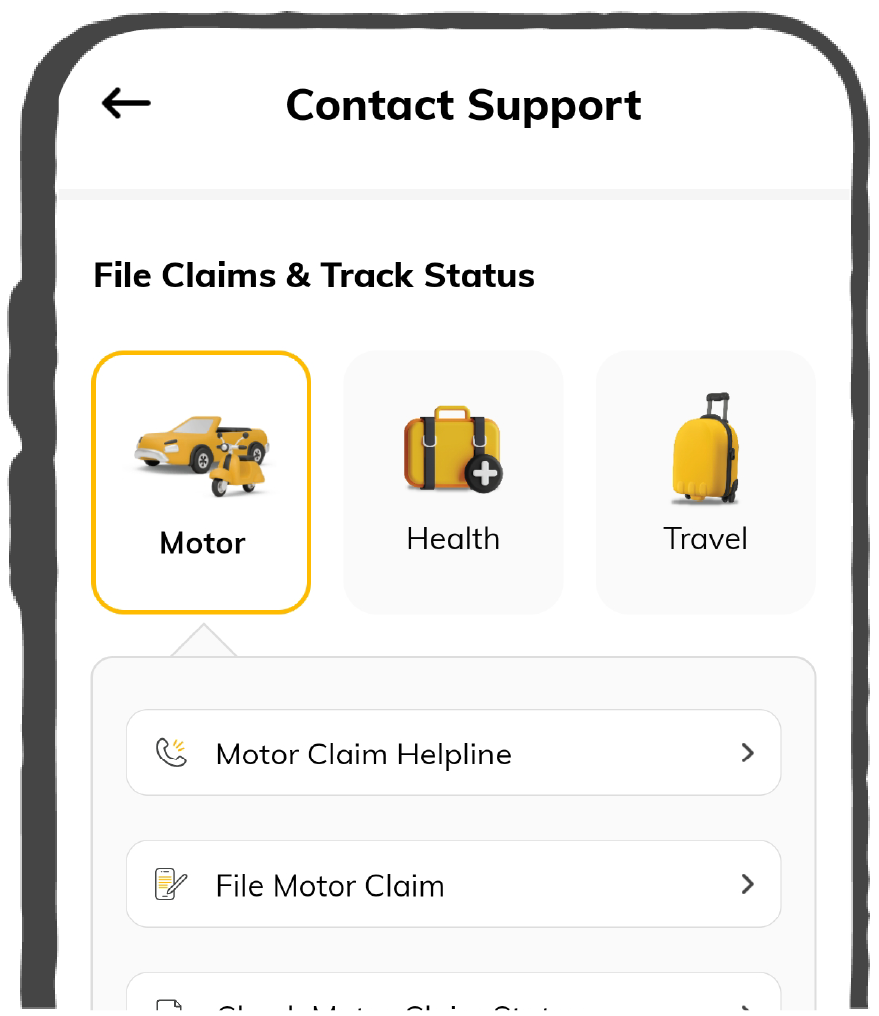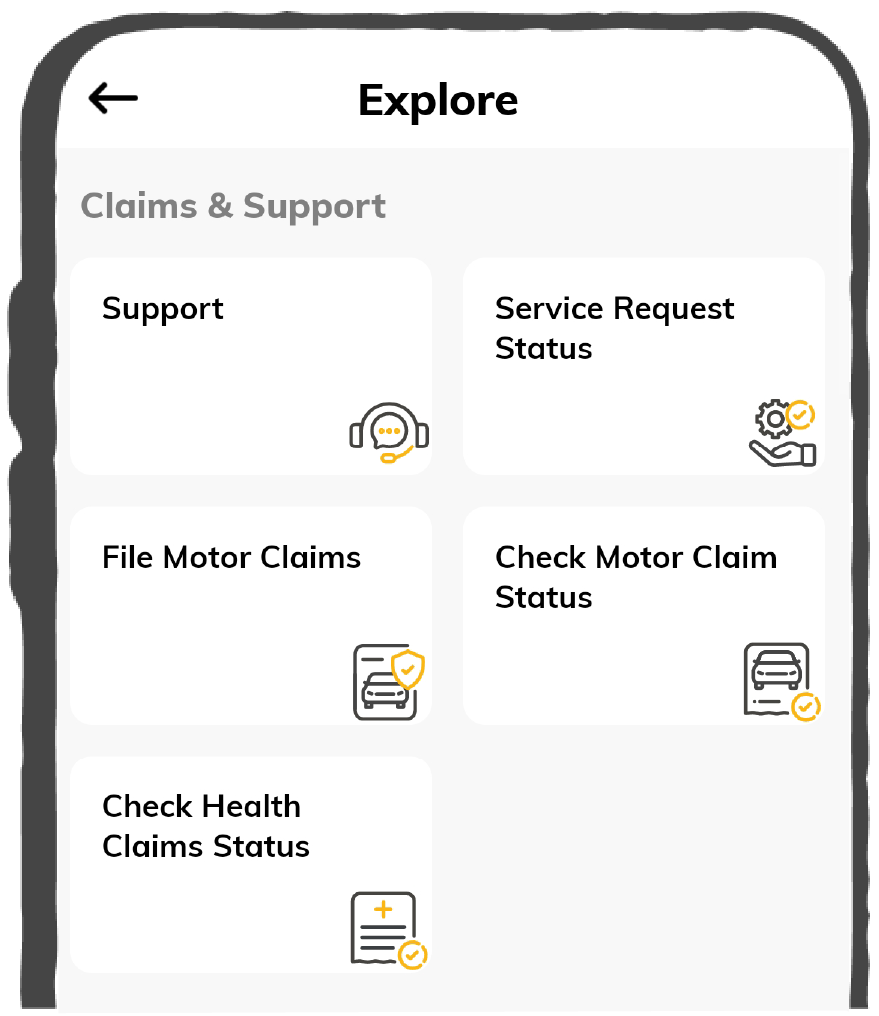9000+ Cashless
Network Garages
96% Claim
Settlement (FY23-24)
24*7 Claims
Support
Click here for new car
I agree to the Terms & Conditions

General
General Products
Simple & Transparent! Policies that match all your insurance needs.


37K+ Reviews
7K+ Reviews
Scan to download
Life
Life Products
Digit Life is here! To help you save & secure your loved ones' future in the most simplified way.


37K+ Reviews
7K+ Reviews
Scan to download
Claims
Claims
We'll be there! Whenever and however you'll need us.


37K+ Reviews
7K+ Reviews
Scan to download
Resources
Resources
All the more reasons to feel the Digit simplicity in your life!
 Tools & Calculators
Tools & Calculators


37K+ Reviews
7K+ Reviews
Scan to download
37K+ Reviews
7K+ Reviews
Our WhatsApp number cannot be used for calls. This is a chat only number.


9000+ Cashless
Network Garages
96% Claim
Settlement (FY23-24)
24*7 Claims
Support
Click here for new car
I agree to the Terms & Conditions

Add Mobile Number
Sorry!

9000+ Cashless
Network Garages
96% Claim
Settlement (FY23-24)
24*7 Claims
Support
Terms and conditions
Your on-road safety has a lot to do with your adherence to car driving tips. Understanding the steering wheel position, following turn signals properly and avoiding overspeeding are some of the most basic yet crucial tips to enhance your driving skills as well as safety. With the tips discussed in the next sections, you’ll be able to enhance mileage, and engine health, to name a few. Take a look. Also discussed later are some general tips for a safe car driving experience.
Read the following write-up, and you will get the best driving-related tips.
To get higher mileage, you need to shift gear early. Drivers often make the mistake of not using low gears. Further, incorrect downshifting consumes more fuel and damages the car in the long run. You can ensure improved fuel efficiency by keeping the RPM needle in between the 1500-2000 range.
If you have to wait for a signal for more than thirty seconds, you must turn off your car. If you do not follow this rule, your vehicle may end up consuming more fuel.
Using car air conditions excessively can reduce mileage by up to 30%. For instance, if your car runs 500 km with a full tank and the air conditioner on, you go 600-725 km with the same fuel capacity without the air conditioner off. Increased level of pollution or higher temperature makes it unbearable to travel on roads. However, using the air conditioner wisely can increase fuel efficiency. Additionally, if your vehicle comes with climate control, you can turn it on ‘auto’ mode and use it in a lower blower mode to ensure less fuel consumption. Wondering how? The air conditioner has to function to maintain the required cabin temperature.
Driving a car with the recommended tyre pressure can increase mileage by around 3%. Further, installing tyres with lower rolling resistance can minimize wasted energy. In case you have already installed alloy wheels, try to switch to regular tyres to save expenses on fuel. No wonder these high-performance tyres will offer improved levels of grip and handling; however, the higher rolling resistance will decrease fuel economy.
A regularly serviced car offers better mileage. While opting for car servicing, make sure the air filter, the spark plugs, and the fuel filter undergo checks at regular intervals. Further, get the car’s oxygen sensor checked at every 6000 km because a damaged or faulty sensor can reduce car mileage by up to 20%. Hence, get your vehicle serviced at recommended intervals even earlier (if required).
Along with learning about mileage and increasing basic tips for car driving, you must have a clear knowledge about ensuring engine health. Read along!
Speeding up can cause significant wear and tear on engine components and transmission. This happens especially when you are upshifting and downshifting constantly. This can end up in consuming more fuel. Therefore, try to follow speed limit rules to lower wear and tear on the engine.
Larger trucks or SUVs can carry an excessive load as they are designed to take the extra load. On the other hand, small crossover or sedans can put a lot of strain on the engine and result in premature engine failure. You can reduce the excessive load from your vehicle by removing heavy boxes and equipment.
Cold weather can impact a vehicle’s engine. A car needs more energy to start an engine on a cold winter morning due to the lower battery charge. Further, the oil gets thick and cold, which makes it difficult for moving parts to operate. In such cases, turn the engine on, wait for thirty seconds to one minute, and slowly drive the car until it gets warmed up without working too hard.
Now that you know about car driving tips and tricks to ensure optimal engine health, we can move on to the section of car riding safety tips.
One of the most essential car driving tips is to stay alert while driving. Pay attention to your actions and the drivers around you, especially when driving on highways at high speeds.
Make sure your car headlights are in optimal condition. This is important, especially when you are driving at night or on rainy or foggy roads.
Apart from the tips mentioned above, there are several car driving tips for beginners. Read on to know about these in detail.
As a beginner, you must learn and obey the traffic signal rules and speed limits. This is to ensure the safety of pedestrians as well as you and your family. Understand the importance of yellow lights, which notifies the drivers to slow down and prepare to stop. Follow these signals and stick to the speed limit in highly populated roadways.
Position your seats correctly, i.e. aligning with the pedals. Fully depress the clutch and make sure your legs are comfortably folded and are not cramped. Adjust seats until you reach a perfect position. If your vehicle has the facility for higher adjustment, do that as well to get a commanding view of the road. At last, adjust your recline in a way where you can freely hold the steering.
Whether you are a seasoned driver or beginner, you must learn to adjust mirrors. Open out the ORVMs if your vehicle has no electronic opening of ORVMs. After that, adjust mirrors either by onboard electric controls or by the manual adjustment handle. Here, you must adjust your car mirror in such a way so that you can view only the tail of your vehicle and the road in the right way.
Follow the above-mentioned car driving tips and tricks to ensure a safe and optimal driving experience.
Yes, keeping the air conditioner on and windows up on highways (especially at higher speeds) help improve fuel efficiency due to decreased aerodynamic drag.
Yes, keeping the air conditioner on and windows up on highways (especially at higher speeds) help improve fuel efficiency due to decreased aerodynamic drag.
Yes, excessive load in a car can increase fuel consumption.
Yes, excessive load in a car can increase fuel consumption.
Please try one more time!
Other Important Car Insurance Tips
Other Important Articles about Car Insurance
Have queries related to Digit motor insurance policy? You can refer to our Policy Wordings for detailed information or reach out to our support team via WhatsApp self-support, email or phone using the information below:
Connect with our self-serve chat bot support - 7026061234
Write to us at hello@godigit.com
Contact
Call us on 1800-258-5956
Other Motor Insurance Plans and Guides
Currently there are no news to show.
Read More
Renew & Download Policy Document, Check Challan, Credit Score, PUC & more
Anytime, Anywhere. Only on Digit App!

4.7
Rated App56K+ Reviews
4.7
Rated App
56K+ Reviews
4.3
Rated App11K+ Reviews
4.3
Rated App
11K+ Reviews
Scan to Download


Author: Team Digit
Last updated: 08-05-2025
CIN: L66010PN2016PLC167410, IRDAI Reg. No. 158.
Go Digit General Insurance Limited | Corporate Office Address: Atlantis, 95, 4th B Cross Road, Koramangala Industrial Layout, 5th Block, Bengaluru 560095 | Registered Office Address: 1 to 6 floors, Ananta One (AR One), Pride Hotel Lane, Narveer Tanaji Wadi, Shivaji Nagar, Pune-411005, Maharashtra | Trade logo of Go Digit General Insurance Ltd. displayed above belongs to Go Digit lnfoworks Services Private Limited and is provided and used by Go Digit General Insurance Ltd. under license.
Explore exclusive features, file claims & access policy on Digit App!
You can also scan this QR code to download the App.